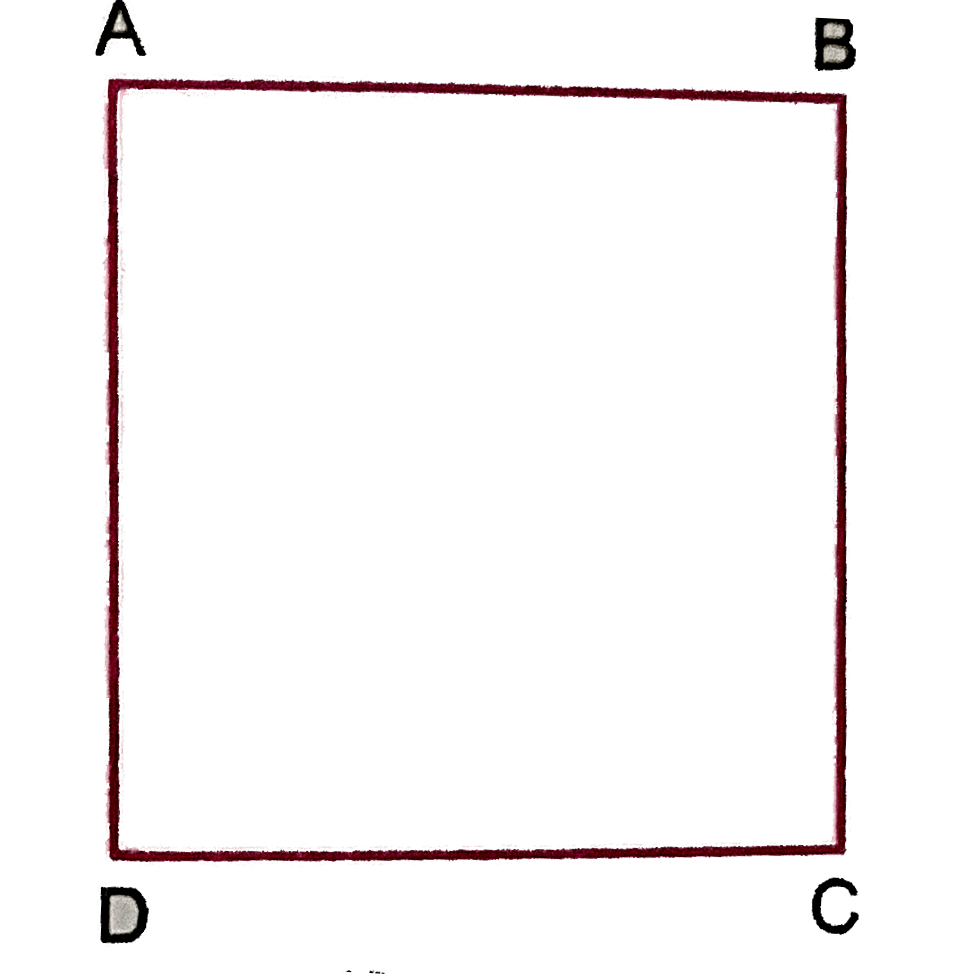A rectangular block of glass ABCD has a refractive index 1.6. A pin is placed midway on the face AB, Fig. When observed from the face AD, the pin shall.
 .
.
appear to be near A
appear to be near D
appear to be near at the centre of AD
not be seen at all
The correct Answer is:D
For μ=1.6 the critical angle μ=1/sinC, we have C= 38.7∘ , when from AD, as long as angle of inidence on AD of the ray emanating from pin is greater than the critical angle, the light suffers from total internal reflection and cannot be seen through AD.
Topper's Solved these Questions
- NUCLEIBook:NCERT EXEMPLARChapter:NUCLEIExercise:Nuclei
Explore 40 Videos
- SEMICONDUCTOR ELECTRONICS: MATERIAL,DEVICES AND SIMPLE CIRCUITBook:NCERT EXEMPLARChapter:SEMICONDUCTOR ELECTRONICS: MATERIAL,DEVICES AND SIMPLE CIRCUITExercise:Semiconductor Electronics: Material,Devices And Simple Circuit
Explore 26 Videos
Similar Questions
A postal stamp is placed on a surface and a glass cube of refractive index 32 is placed over it. When observed through the glass slab, the stamp appears at a height of 1.5 cm from the bottom. Another glass cube made of different material nad having the same thickness is placed over the first glass cube. When observed from the top, the stamp now appears to be at a height of 4 cm from the bottom. Determine the refractive index of the second galss cube.
View SolutionA rectangular glass block of thickness 10 cm and refractive index 1.5 placed over a small coin. A beaker is filled with water of refractive index 4/3 to a height of 10 cm and is placed over the glass block.
(a) Find the apparent position of the object when it is viewed at near normal incidence.
(b) if the eye is slowly moves away from the normal at a certain position, the object is found to disappear, due to total internal reflection. At what surface does this happen and why ?
View Solution
Knowledge Check
A point object is placed at the centre of a glass sphere of radius 6 cm and refractive index 1.5. The distance of the virtual image from the surface of the glass is
A2 cmB4 cmC6 cmD12 cmA glass prism has a refractive angle of 90∘ and a refractive index of 1.5. A ray is incident at an angle of 30∘. The ray emerges from an adjacent face at an angle of
A60∘B30∘C45∘Dthe ray does not emergeA cubical block of glass of refractive index n1 is in contact with the surface of water of refractive index n2. A beam of light is incident on vertical face of the block. After refraction a total internal reflection at the base and refraction at the opposite face take place. The ray emerges at angle θ as shown. The value of θ is given by
 Asinθ<√n21−n22Bcosθ<√n21−n22Csinθ<1√n21−n22Dcosθ<1√n21−n22
Asinθ<√n21−n22Bcosθ<√n21−n22Csinθ<1√n21−n22Dcosθ<1√n21−n22
A ray of light enters the face AB of a glass prism of refractive index μ at an angle of incidence i. Find the value of i such that no ray emerges from the face AC of the prism, given angle of prism is A.
View SolutionA ray of light the face AB of a glass prism of refractive index μ at an angle of incidence i. Find the value of i such that no ray emerges from the face AC of the prism. Given angle of prism is A.

View SolutionA rectangular block of glass is placed on a mark made on the surface of the table and it is viewed from the vertical position of eye. If refractive index of glass be μ and its thickness d, then the mark will appear to be raised up by
View SolutionA large rectangular glass block of refractive index μ is lying on a horizontal surface as shown in Figure. Find the minimum value of μ so that the spot S on the surface cannot be seen through top plane ‘ABCD’ of the block.

View SolutionAn equilateral glass prism has a refractive index 1.6 in air. Calculate the angle of minimum deviation of the prism, when kept in a medium of refractive index 4√2/5
View Solution

